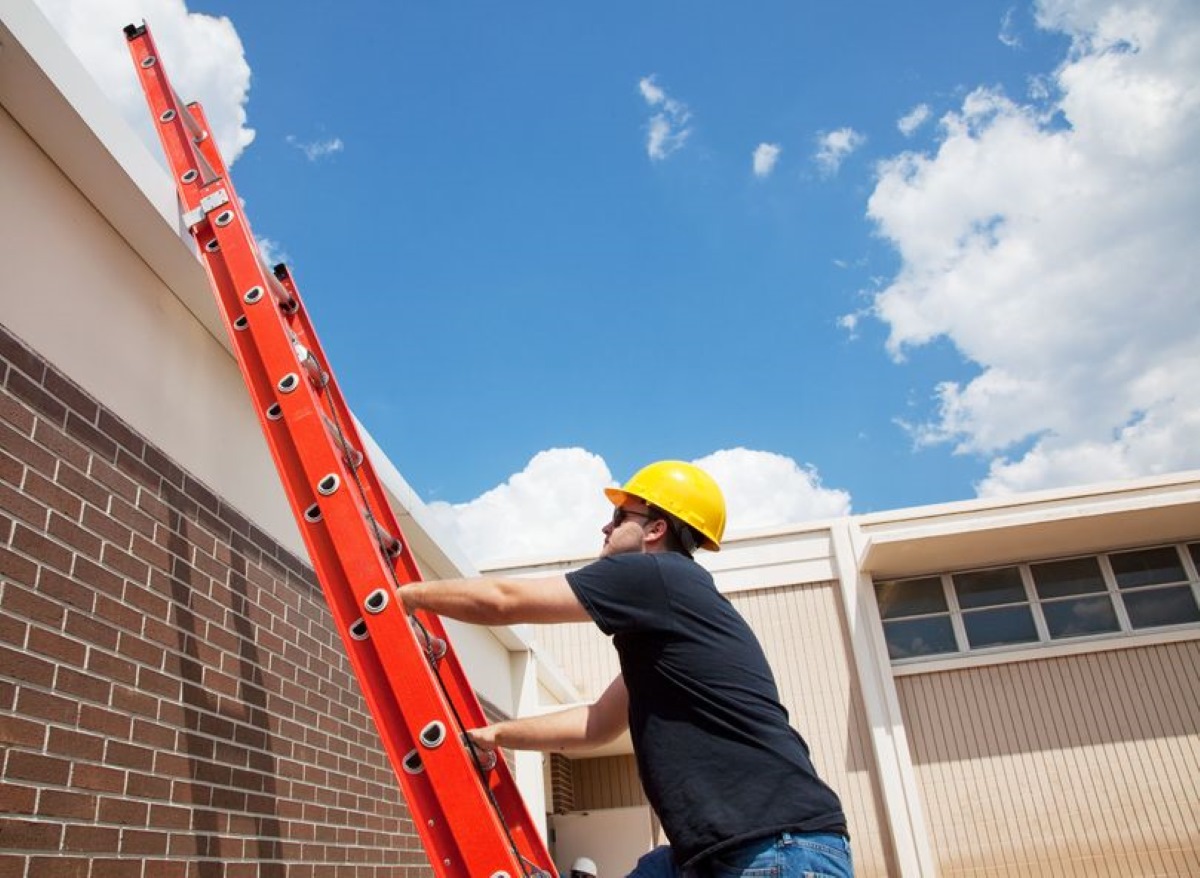

Articles
How To Safely Climb A Ladder
Modified: February 22, 2024
Learn how to safely climb a ladder with these useful articles. Discover tips and techniques to prevent accidents and ensure your safety while working at heights.
(Many of the links in this article redirect to a specific reviewed product. Your purchase of these products through affiliate links helps to generate commission for Storables.com, at no extra cost. Learn more)
Introduction
Using a ladder is something many of us do without much thought, whether it’s for reaching high shelves in our homes or performing tasks at work. However, it’s important to remember that climbing a ladder safely is essential to prevent accidents and injuries. By following proper ladder safety guidelines, you can significantly reduce the risk of falls and ensure your well-being while working at heights.
In this article, we will guide you through the process of safely climbing a ladder. Whether you are a homeowner tackling a DIY project or a professional tradesperson working on a construction site, these tips will help you choose the right ladder, set it up correctly, climb with confidence, and descend safely.
Remember, ladder safety is not something to take lightly. Falls from ladders can result in serious injuries, including broken bones, sprains, and even permanent disabilities. By following the steps outlined in this article, you can protect yourself and others from harm and ensure a successful and accident-free ladder climbing experience.
So, let’s get started and discover the essential practices for safely climbing a ladder.
Key Takeaways:
- Prioritize ladder safety by choosing the right ladder, inspecting it thoroughly, setting it up correctly, and using safety equipment. By following these steps, you can significantly reduce the risk of accidents and injuries while climbing.
- Climbing a ladder safely involves maintaining balance, using proper techniques, and descending carefully. By incorporating these practices into your routine and storing the ladder correctly, you can ensure a safe and successful climbing experience.
Read more: How To Climb A Ladder
Choosing the Right Ladder
Before you begin climbing a ladder, it’s crucial to ensure that you have the right ladder for the job. Choosing the appropriate ladder will depend on various factors, including the height you need to reach, the type of work you’ll be doing, and the weight capacity required.
Here are some key considerations to keep in mind when selecting a ladder:
- Height: Determine the maximum height you need to reach. Ladders come in various lengths, from small step ladders suitable for indoor use to extension ladders that can reach several stories high.
- Type: Consider the type of ladder that best suits your needs. Common types include step ladders, extension ladders, platform ladders, and combination ladders. Each type has its own features and advantages, so choose one that is appropriate for your specific task.
- Weight Capacity: Ensure that the ladder you choose can safely support your weight and the weight of any tools or materials you may be carrying. Refer to the ladder’s weight capacity rating to ensure it meets your requirements.
- Material: Ladders are commonly made of aluminum, fiberglass, or wood. Aluminum ladders are lightweight and resistant to corrosion, making them ideal for most tasks. Fiberglass ladders are non-conductive, making them suitable for electrical work. Wood ladders are sturdy but require regular inspection for signs of damage or decay.
- Stability: Look for ladders with non-slip feet or rubber grips to provide stability on different surfaces. Additionally, consider ladders with side rails or handrails for added stability and security.
By taking these factors into account, you can choose a ladder that is suitable for your specific needs and work environment. Remember, selecting the right ladder is the first step towards climbing safely and completing your task without any incidents.
Inspecting the Ladder
Before you start climbing a ladder, it’s essential to thoroughly inspect it to ensure it’s in good condition and free from any defects or damage. Regular ladder inspections are crucial for your safety and the longevity of your ladder.
Here are the key steps to inspecting a ladder:
- Check for Physical Damage: Inspect the ladder for any visible signs of damage, such as cracks, dents, or bent parts. If you notice any damage, do not use the ladder and arrange for repairs or replacement.
- Ensure Proper Functioning: Test the ladder’s moving parts, such as locks, hinges, and rungs, to ensure they are in good working condition. Make sure all mechanisms operate smoothly and securely.
- Check for Stability: Verify that the ladder’s feet or grips are intact and in good condition. Look for any signs of wear or damage that may compromise the ladder’s stability.
- Inspect the Safety Labels and Tags: Check that the ladder has the necessary safety labels and tags, including load capacity, manufacturer information, and any other warning signs or instructions. Make sure these labels are clear and legible.
- Verify Cleanliness: Ensure the ladder is free from any debris, oil, or other slippery substances that may pose a hazard while climbing. Clean the ladder if necessary.
If, during the inspection, you identify any issues or damages that could compromise the ladder’s safety, do not use it. It’s essential to address these problems promptly by either repairing the ladder or replacing it if necessary.
Remember, ladder inspections should be performed regularly, particularly for ladders that are frequently used or subjected to harsh conditions. Regular maintenance and inspections will help prevent accidents and ensure that your ladder remains in optimal working condition.
Setting Up the Ladder
Properly setting up a ladder is crucial for maintaining stability and ensuring your safety while climbing. Whether you are working inside or outside, it’s important to follow the correct procedure for setting up your ladder.
Here are the steps to safely set up a ladder:
- Choose a Suitable Location: Select a level and stable surface for placing your ladder. Avoid areas with uneven or slippery ground. If needed, use leveling devices like ladder levelers to ensure stability.
- Position the Ladder at the Correct Angle: Position the base of the ladder one foot away from the wall or structure for every four feet of ladder height. This 1:4 ratio helps maintain stability.
- Extend the Ladder Fully: Extend the ladder to its full length, ensuring that all rungs are engaged and locked securely in place. Avoid overextending the ladder beyond its recommended height.
- Secure the Ladder: If possible, secure the top of the ladder to a stable structure using straps or hooks. This additional support will provide extra stability and prevent the ladder from shifting or slipping.
- Test the Stability: Once the ladder is set up, give it a gentle shake or push to ensure it’s firmly positioned and doesn’t wobble. If it feels unstable, adjust the ladder’s position or re-evaluate the setup process.
During the setup process, it’s important to watch out for any obstacles or hazards in the surrounding area. Ensure that there is enough clearance above and around the ladder to safely climb and work without any obstructions.
It’s worth noting that some ladders require specific setting up procedures, such as extension ladders and step ladders with a spreader bar. Always refer to the ladder manufacturer’s instructions for any specific setup guidelines.
By following these steps and taking the time to set up your ladder correctly, you can ensure optimal stability and reduce the risk of accidents while climbing.
Climbing the Ladder Correctly
When it comes to climbing a ladder, it’s important to follow proper techniques to maintain balance and stability. Knowing how to climb the ladder correctly can significantly reduce the risk of accidents and ensure your safety while working at heights.
Here are the steps to climb a ladder safely:
- Face the Ladder: Approach the ladder and position yourself facing it. Use both hands to hold onto the ladder’s side rails or rungs for support and stability.
- Maintain Three Points of Contact: As you begin climbing, always ensure that you maintain three points of contact with the ladder. This means having either two hands and one foot, or two feet and one hand securely positioned on the ladder at all times.
- Ascend One Rung at a Time: Climb the ladder by moving one rung at a time, never skipping or overreaching for the next rung. Maintain a steady and controlled pace throughout the climb.
- Use Proper Foot Placement: When placing your feet on each rung, position them squarely and firmly. Ensure that your entire foot is in contact with the rung for maximum stability.
- Avoid Overreaching: While climbing, avoid overreaching or leaning too far in any direction. This can throw off your balance and increase the risk of toppling off the ladder.
- Keep Your Body Centered: Maintain a center of gravity by keeping your body positioned between the ladder’s side rails or rungs. Avoid leaning to one side or reaching out too far to maintain balance.
- Take Breaks if Needed: If you feel fatigued or need to readjust your position while climbing, safely descend and take a break. It’s essential to listen to your body and avoid pushing yourself beyond your limits.
As you reach the desired height, ensure that you have a stable platform or support to perform your task. If needed, use additional stability devices such as ladder stabilizers or stand-offs to provide a secure working area at the top of the ladder.
Remember, climbing a ladder should never be rushed or taken lightly. Always prioritize your safety by climbing slowly and methodically, following the proper techniques outlined above.
Always maintain three points of contact when climbing a ladder – two hands and one foot or two feet and one hand. This will help you stay balanced and reduce the risk of falling.
Maintaining Balance and Stability
When working on a ladder, maintaining balance and stability is essential to prevent falls and accidents. By following a few simple guidelines, you can minimize the risk of losing your balance and ensure a safe and secure climbing experience.
Here are some tips for maintaining balance and stability while on a ladder:
- Wear Proper Footwear: Choose footwear with slip-resistant soles that provide good traction. Avoid wearing shoes with heels or open-toed shoes that can increase the risk of slipping or losing balance.
- Keep the Ladder Centered: As you climb, always keep your body centered between the ladder’s side rails. Avoid leaning too far to one side, as this can compromise stability and increase the risk of tipping.
- Avoid Sudden Movements: Make deliberate and controlled movements while on the ladder. Avoid sudden jerks or quick changes in position, as it can throw off your balance.
- Use Your Arms for Balance: Allow your arms to act as counterbalances to maintain stability. Keep them slightly extended and hold onto the ladder’s side rails or rungs for support and balance.
- Avoid Overloading: Do not exceed the ladder’s weight capacity by carrying heavy tools or equipment. Overloading the ladder can make it unstable and increase the risk of accidents.
- Keep Your Body Straight: Maintain good posture and a straight body alignment while on the ladder. Avoid leaning backward or forward, as it can throw off your balance.
- Be Mindful of Your Surroundings: Stay aware of any potential hazards or obstacles around you. Avoid overreaching or leaning into objects that could cause you to lose balance.
- Use a Tool Belt or Bucket: Instead of carrying tools or materials in your hands while on the ladder, use a tool belt or bucket attached to the ladder. This keeps your hands free and reduces the risk of losing balance.
By following these tips, you can maintain balance and stability while on a ladder, significantly reducing the risk of accidents or falls. Remember, your safety should always be the top priority when working at heights.
Using Ladder Safety Equipment
In addition to following proper ladder climbing techniques, using ladder safety equipment can provide an additional layer of protection and enhance your overall safety while working at heights. Various safety equipment options are available to help mitigate risks and minimize the chances of accidents.
Here are some commonly used ladder safety equipment options:
- Ladder Stabilizers: Ladder stabilizers are attachments that provide additional support and stability to the ladder, particularly on uneven surfaces. They help prevent the ladder from tipping or wobbling during use.
- Stand-Offs: Stand-offs are extensions that attach to the top of a ladder, creating space between the ladder and the supporting surface, such as a wall. They help maintain a safe working distance from the wall and can also serve as a tool tray.
- Harnesses and Safety Belts: For certain high-risk tasks or working at extreme heights, using a safety harness and appropriate fall protection equipment is essential. These devices help prevent falls and provide additional support and stability.
- Ladder Levelers: Ladder levelers are adjustable feet that attach to the bottom of the ladder, allowing you to adjust the ladder’s height on uneven surfaces. This helps maintain stability and prevents the ladder from leaning to one side.
- Safety Gates and Ladder Guards: Safety gates and ladder guards can be installed at the top of the ladder to provide a physical barrier, preventing accidental falls from the ladder’s top step or platform.
- Anti-Slip Devices: Using anti-slip devices, such as ladder grip pads or nonslip tape, on the ladder’s rungs or steps can enhance traction and reduce the risk of slipping while climbing.
- Tool Trays and Buckets: Instead of carrying tools or materials in your hands while climbing, use tool trays or buckets that can be securely attached to the ladder. This keeps your hands free and helps prevent accidents due to loss of balance.
While ladder safety equipment can provide additional protection, it’s important to note that they should be used in conjunction with proper ladder usage techniques and not as a substitute. Additionally, always ensure that the safety equipment you use is in good condition, properly maintained, and installed according to the manufacturer’s guidelines.
By incorporating appropriate ladder safety equipment into your work routine, you can enhance your safety and minimize the risk of accidents while working at heights.
Descending Safely from the Ladder
Descending safely from a ladder is just as important as climbing it. Taking the appropriate measures when coming down can help prevent accidents and injuries. It’s essential to maintain control and balance while carefully navigating each step of the descent.
Here are some guidelines for descending safely from a ladder:
- Plan Your Descent: Before you begin descending, ensure that the area at the bottom of the ladder is clear of any obstacles or hazards. Take a moment to mentally plan your descent path.
- Face the Ladder: Position your body facing the ladder, just as you did when climbing up. This ensures that you have a clear view of each rung as you descend.
- Maintain Three Points of Contact: Whenever possible, maintain three points of contact with the ladder during your descent. This can be achieved by keeping two hands and one foot or two feet and one hand on the ladder.
- Descend One Rung at a Time: Slowly and carefully step down one rung at a time. Take your time and ensure that each foot makes solid contact with the rung before moving to the next one.
- Control Your Descent Speed: Avoid rushing or sliding down the ladder. Maintain a controlled speed and be mindful of your balance and stability as you descend.
- Use Handrails or Side Rails: If the ladder you are using has handrails or side rails, make use of them for support and added stability while descending.
- Avoid Jumping or Skipping Rungs: Never jump or skip rungs while descending. It’s crucial to take each step deliberately and cautiously to prevent loss of balance and potential falls.
- Look Ahead: Keep your focus on the ladder and look ahead to anticipate any potential obstacles or uneven surfaces as you descend.
- Use Caution at the Bottom: Once you reach the bottom of the ladder, exercise caution while stepping off. Ensure that you have stable ground beneath you before fully letting go of the ladder.
By following these steps, you can safely descend from a ladder, maintaining control, and minimizing the risk of accidents. Always prioritize your safety and take your time when coming down from a ladder.
Storing the Ladder Properly
Properly storing your ladder not only helps maintain its longevity but also ensures that it is ready for safe use the next time you need it. Storing your ladder in a secure and suitable location protects it from potential damage and reduces the risk of accidents.
Here are some essential tips for storing your ladder properly:
- Clean the Ladder: Before storing the ladder, make sure to clean off any dirt, debris, or other substances that may have accumulated on it. Use a damp cloth or brush to wipe down the ladder, paying extra attention to the rungs and side rails.
- Inspect for Damage: Perform a quick inspection of the ladder to identify any visible signs of wear, damage, or loose parts. Address any issues promptly by repairing or replacing the ladder before storing it.
- Choose a Suitable Storage Location: Select a storage area that is clean, dry, and free from exposure to extreme temperatures or direct sunlight. Ideally, the storage location should be away from heavy foot traffic and inaccessible to children or unauthorized individuals.
- Store in an Upright Position: Whenever possible, store the ladder in an upright position, leaning against a wall or hung vertically. This ensures that the ladder remains secure and minimizes the risk of it falling over or being tripped on.
- Use Ladder Storage Hooks or Racks: To provide additional stability and organization, consider using ladder storage hooks or racks designed specifically for holding ladders. These help keep the ladder in position and prevent it from moving or sliding around.
- Avoid Propping Against Unstable Surfaces: When storing the ladder, avoid propping it against surfaces that are unstable or easily moveable, such as stacks of boxes or equipment. This reduces the risk of the ladder accidentally tipping over.
- Secure Loose Parts: If your ladder has any removable parts, such as extension ladder locks or spreader bars, make sure to secure them properly before storing the ladder. This prevents any parts from getting lost or damaged during storage.
- Protect from Environmental Elements: If your ladder is stored outdoors, consider using a protective cover or tarp to shield it from rain, snow, or excessive exposure to sunlight. This helps prevent damage caused by weather elements.
By following these storage guidelines, you can ensure that your ladder remains in good condition and ready for safe use whenever you need it. Proper storage not only prolongs the lifespan of the ladder but also promotes overall safety.
Read more: How To Climb Rope Ladder
Conclusion
Climbing a ladder may seem like a mundane task, but it’s important to approach it with a focus on safety. By following the proper techniques and guidelines outlined in this article, you can significantly reduce the risk of accidents and injuries while working at heights.
Choosing the right ladder for the job, inspecting it for any damage, setting it up correctly, and using ladder safety equipment are all essential steps in creating a safe environment for climbing. Climbing the ladder correctly, maintaining balance and stability, descending safely, and storing the ladder properly are all equally important aspects of maintaining ladder safety.
Remember, ladder safety is not something to be taken lightly. Falls from ladders can result in severe injuries, causing pain, disruption, and potential long-term consequences. By adopting the recommended practices and incorporating them into your ladder climbing routine, you can protect yourself, your colleagues, and your loved ones from unnecessary harm.
Always prioritize your safety by wearing appropriate footwear, using safety equipment when necessary, and being mindful of your surroundings. Regularly inspect and maintain your ladder to ensure it remains in good condition, free from defects or damage.
By taking these precautions, being aware of potential hazards, and following proper ladder safety guidelines, you can confidently and safely climb a ladder to accomplish various tasks, whether at home or at work.
Frequently Asked Questions about How To Safely Climb A Ladder
Was this page helpful?
At Storables.com, we guarantee accurate and reliable information. Our content, validated by Expert Board Contributors, is crafted following stringent Editorial Policies. We're committed to providing you with well-researched, expert-backed insights for all your informational needs.
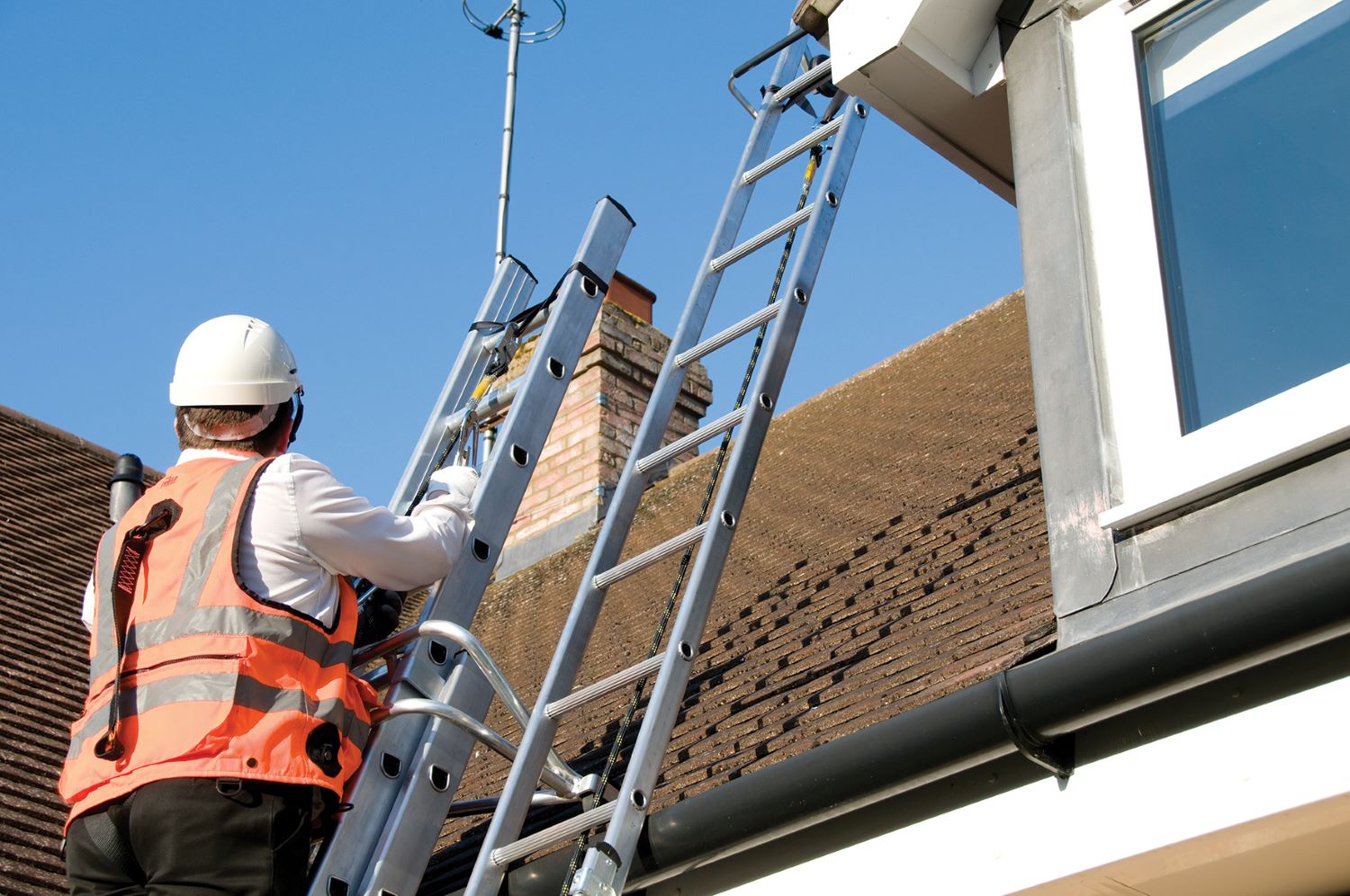
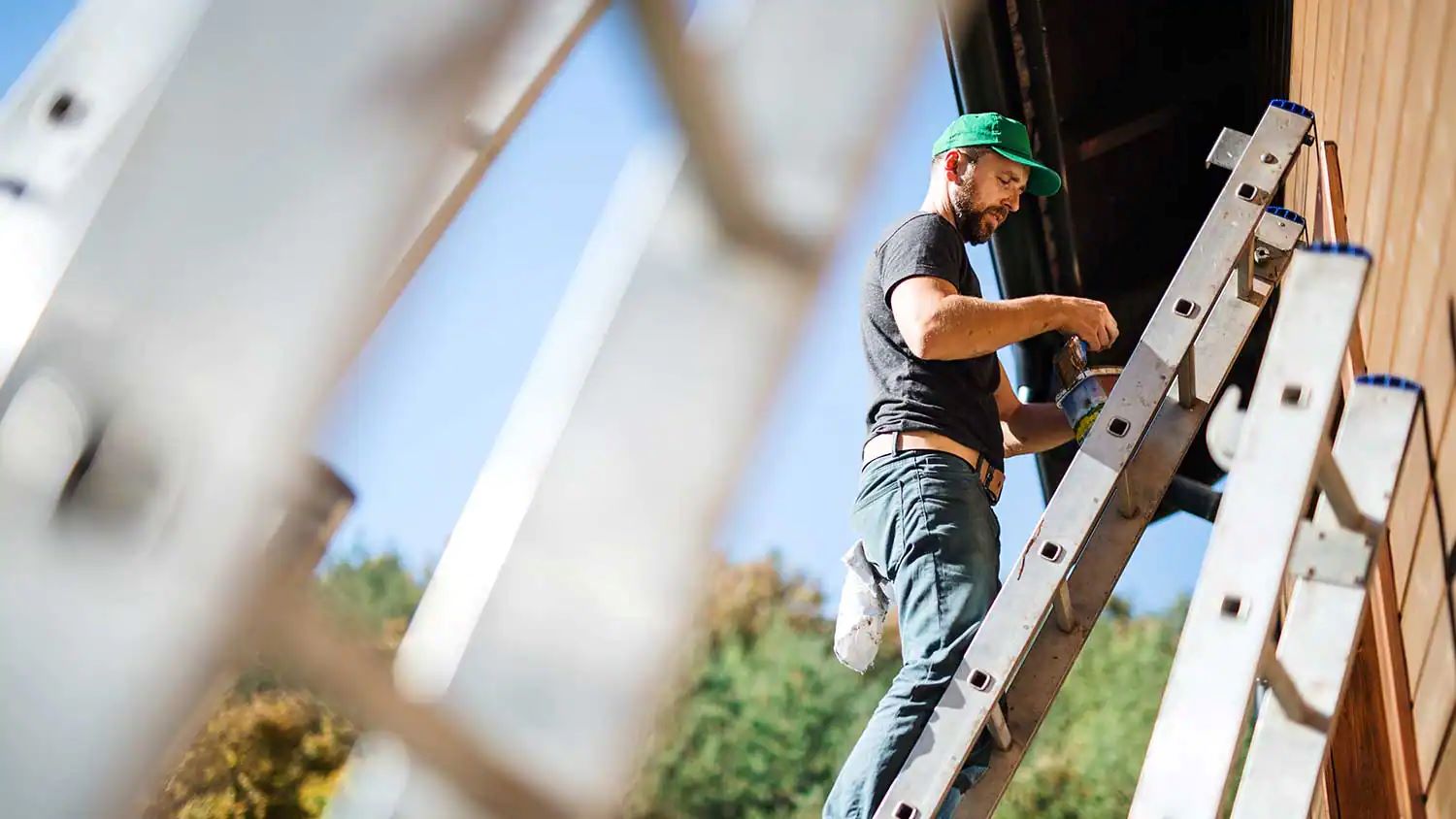
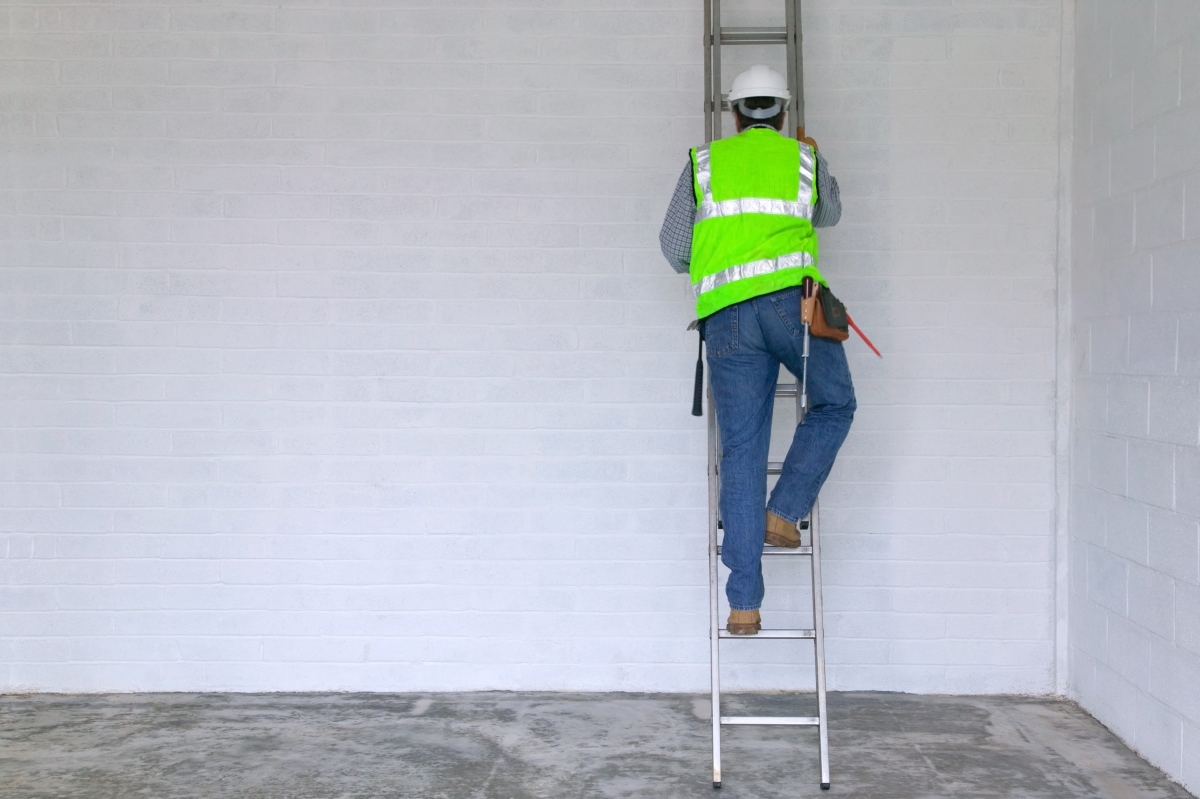
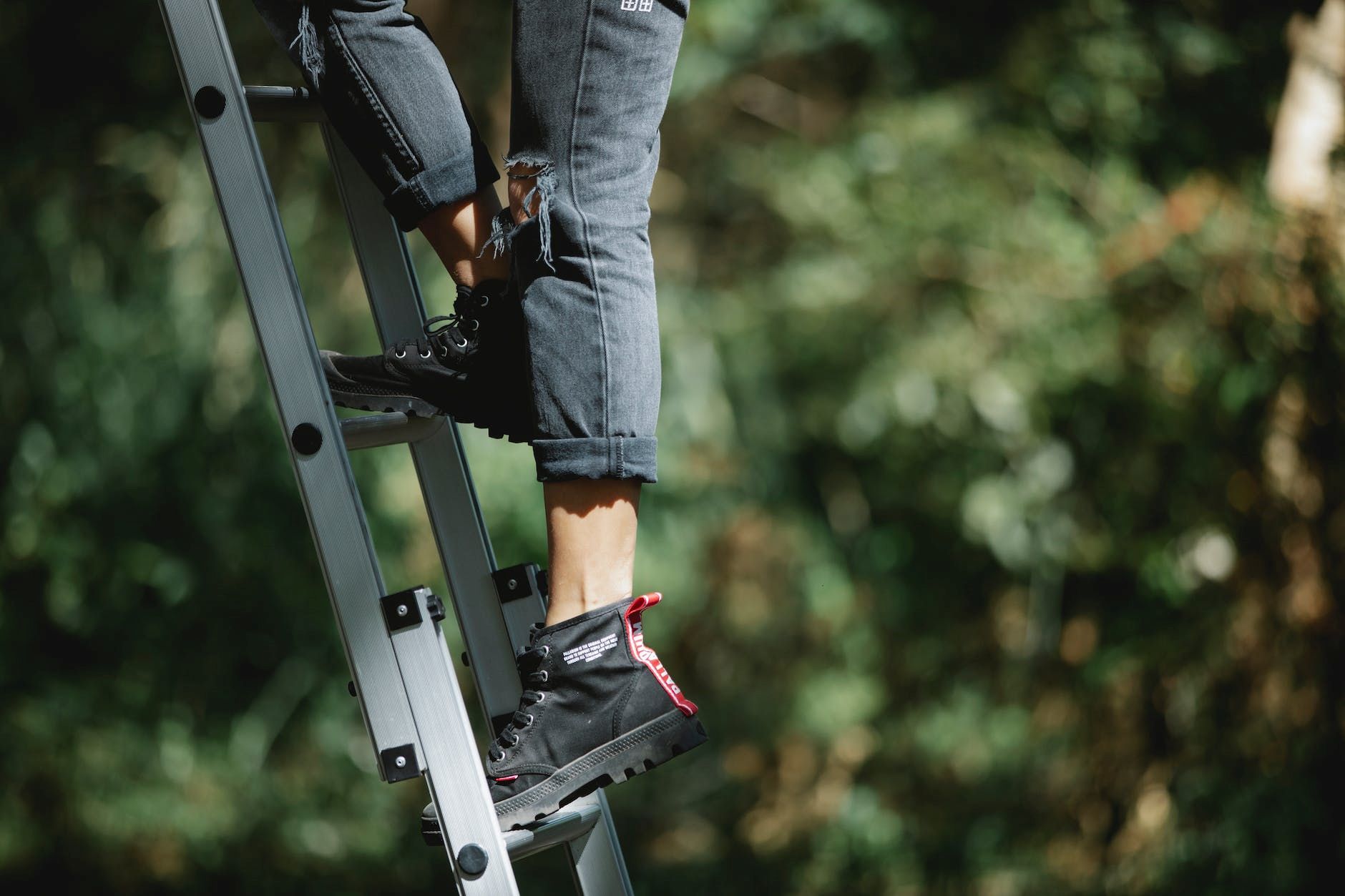
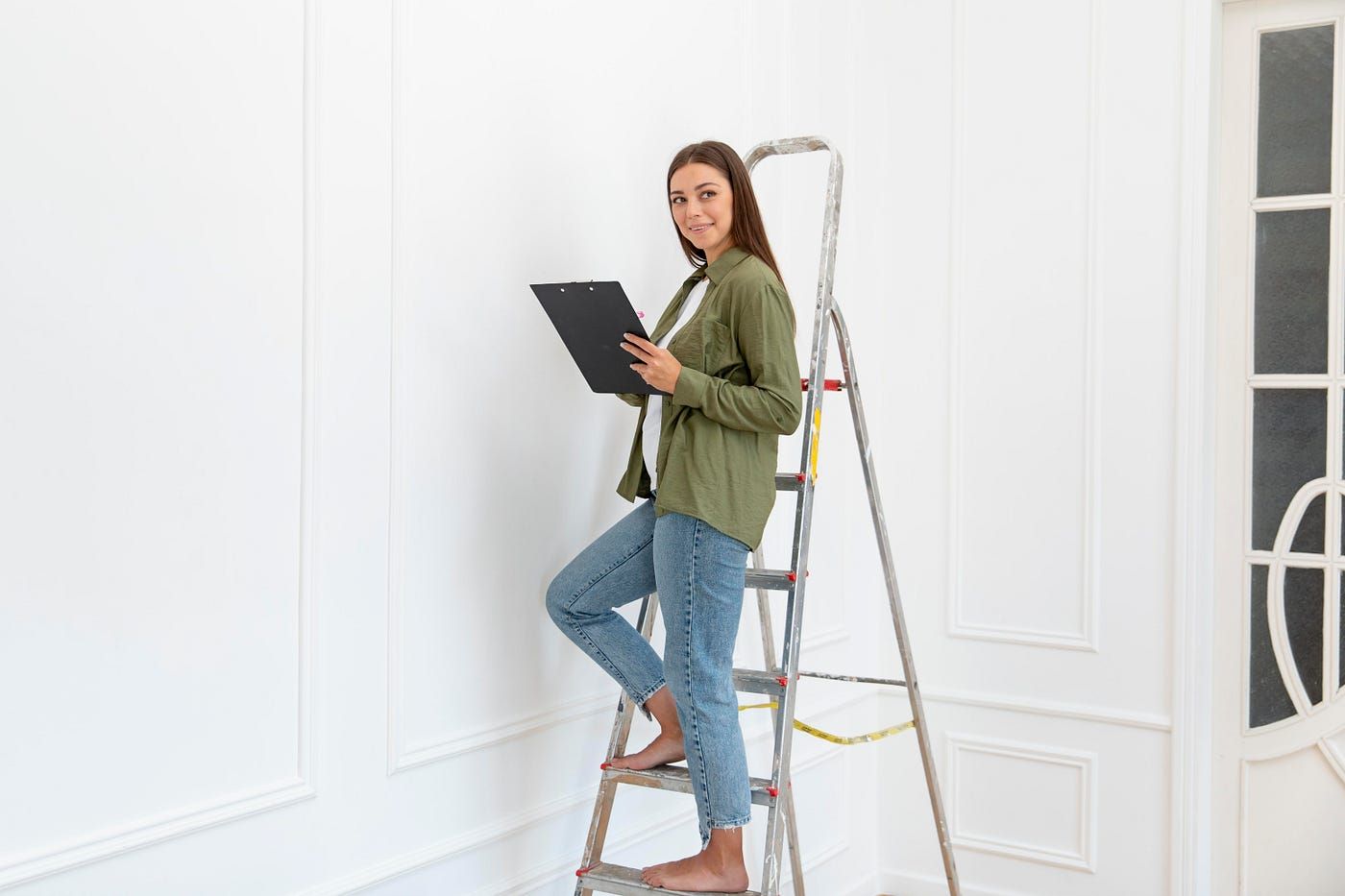
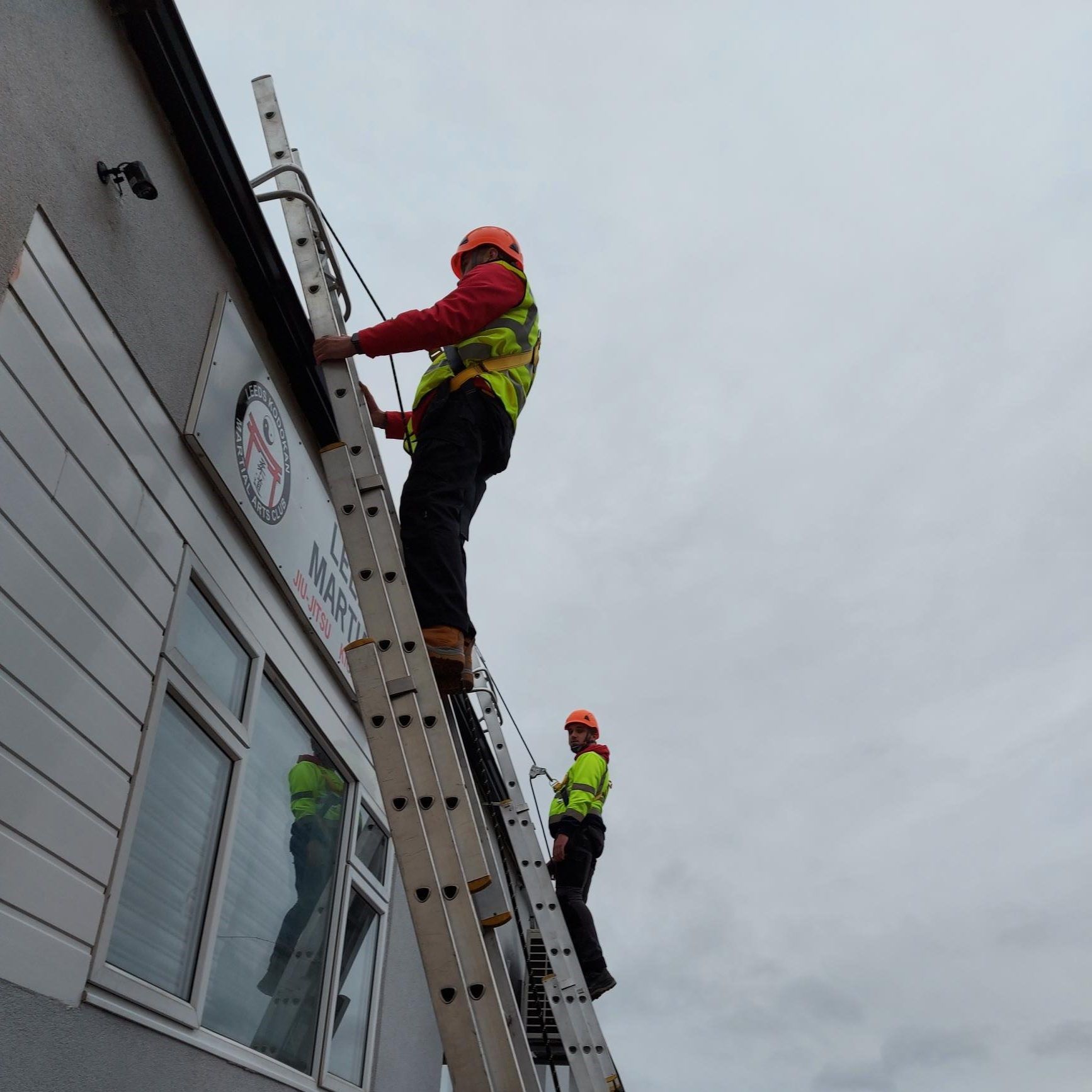
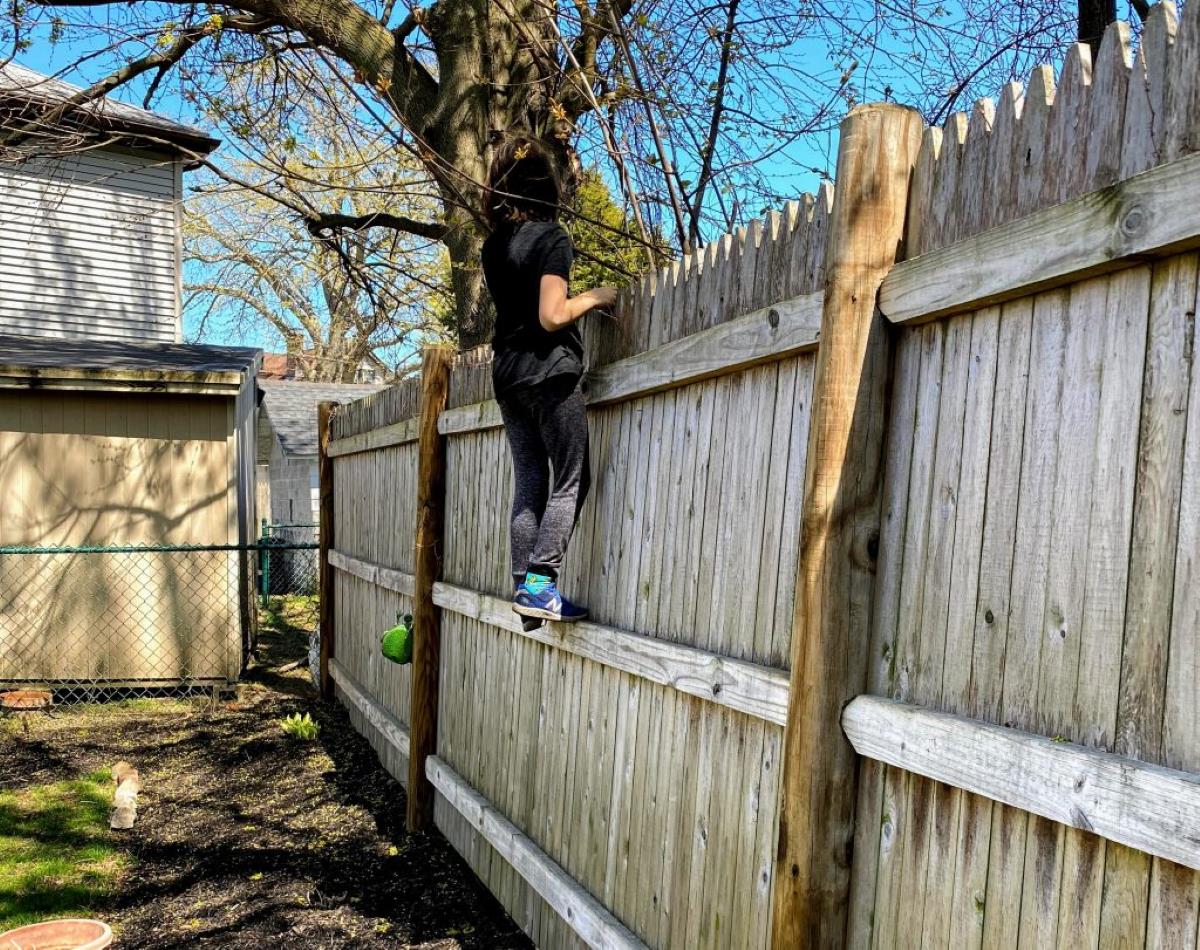
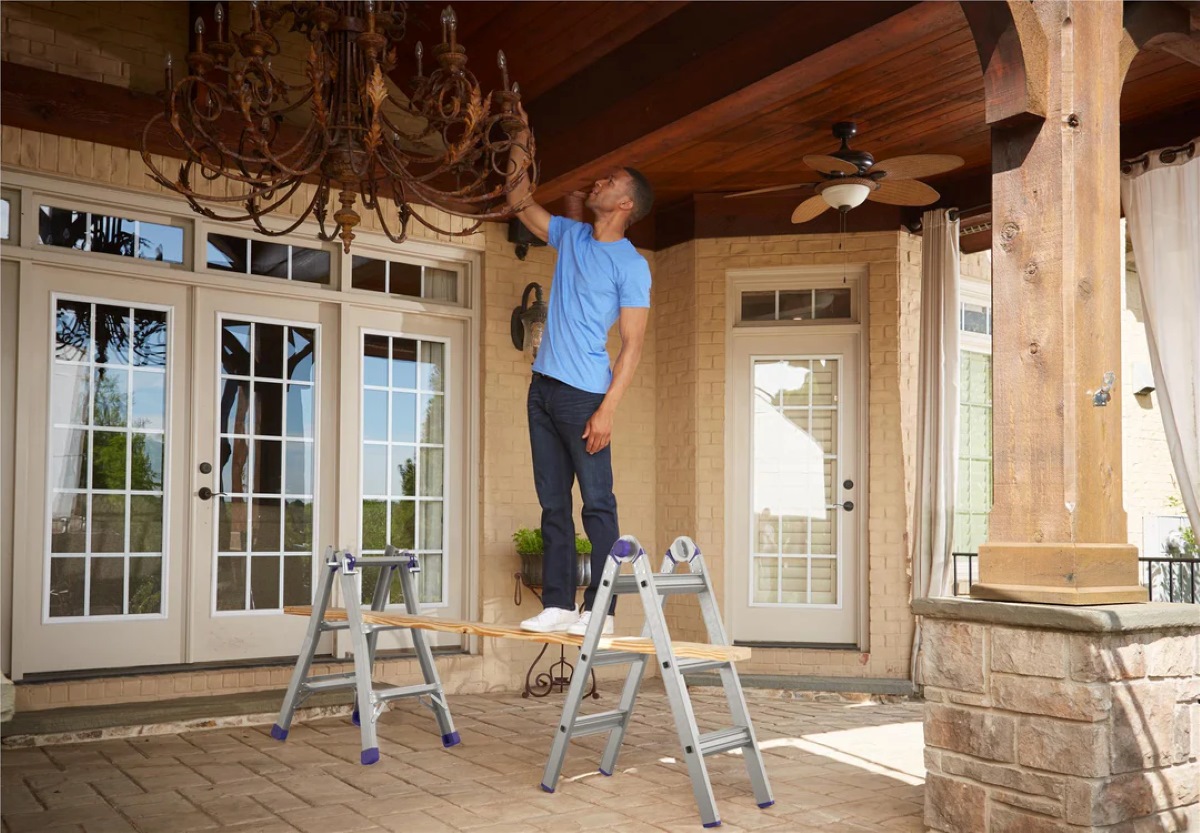

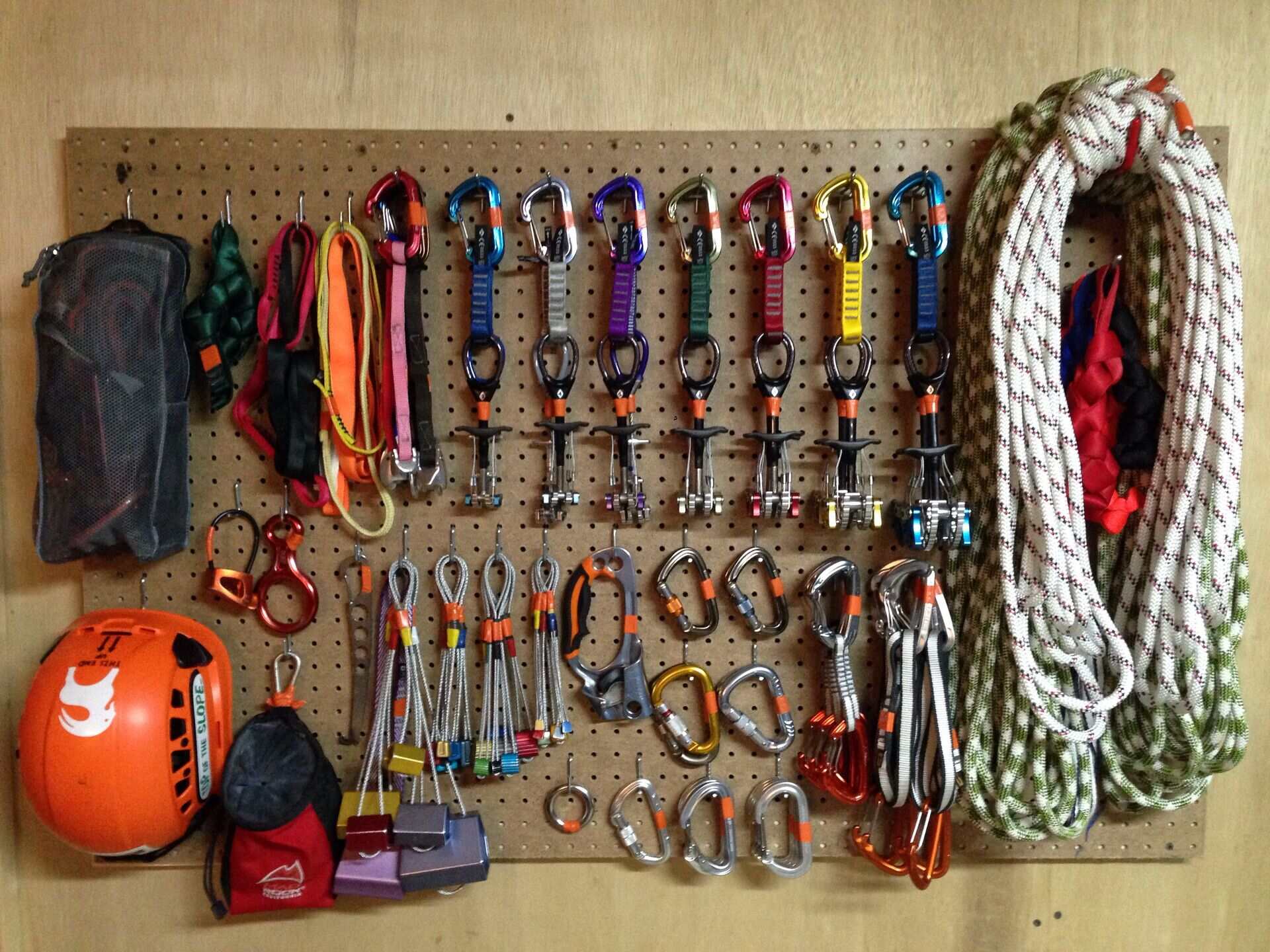
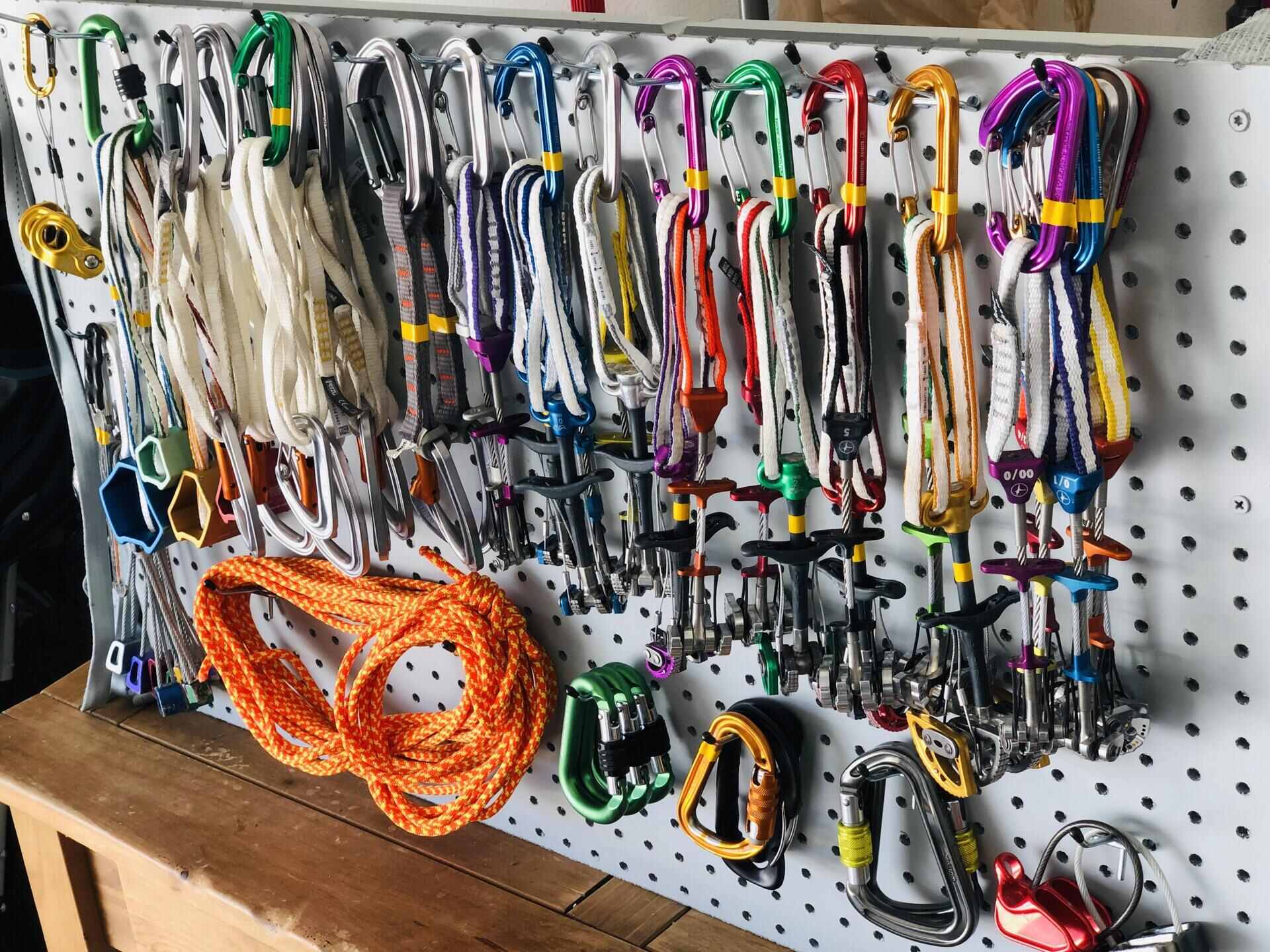
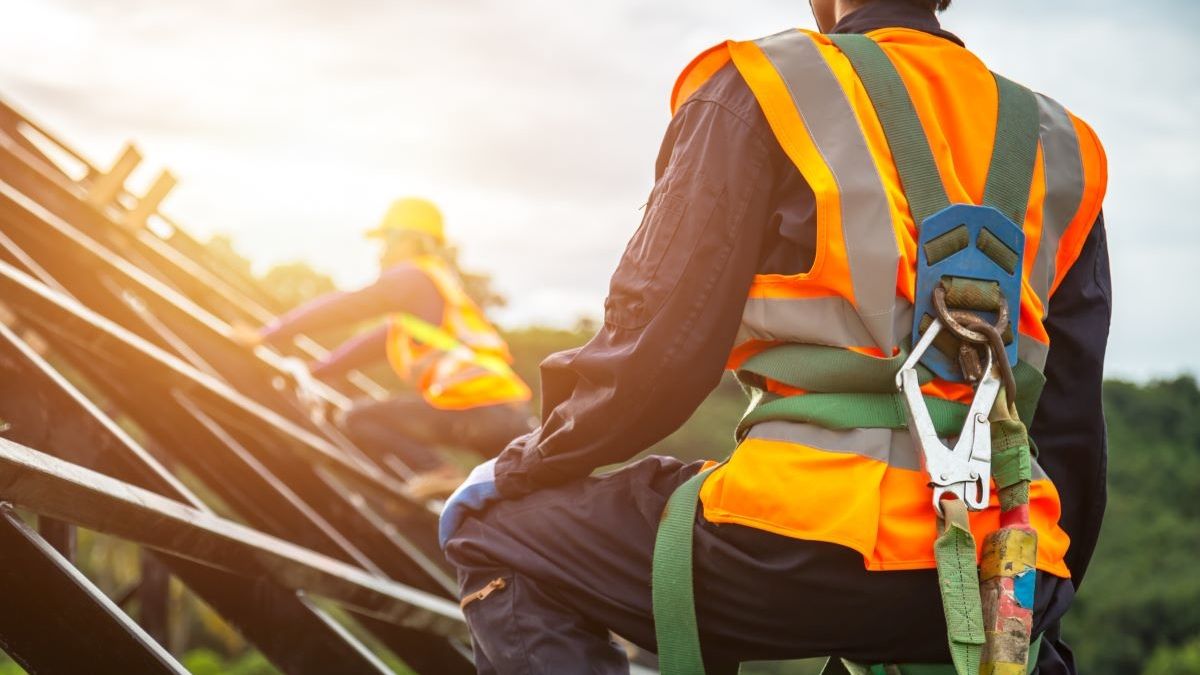


0 thoughts on “How To Safely Climb A Ladder”